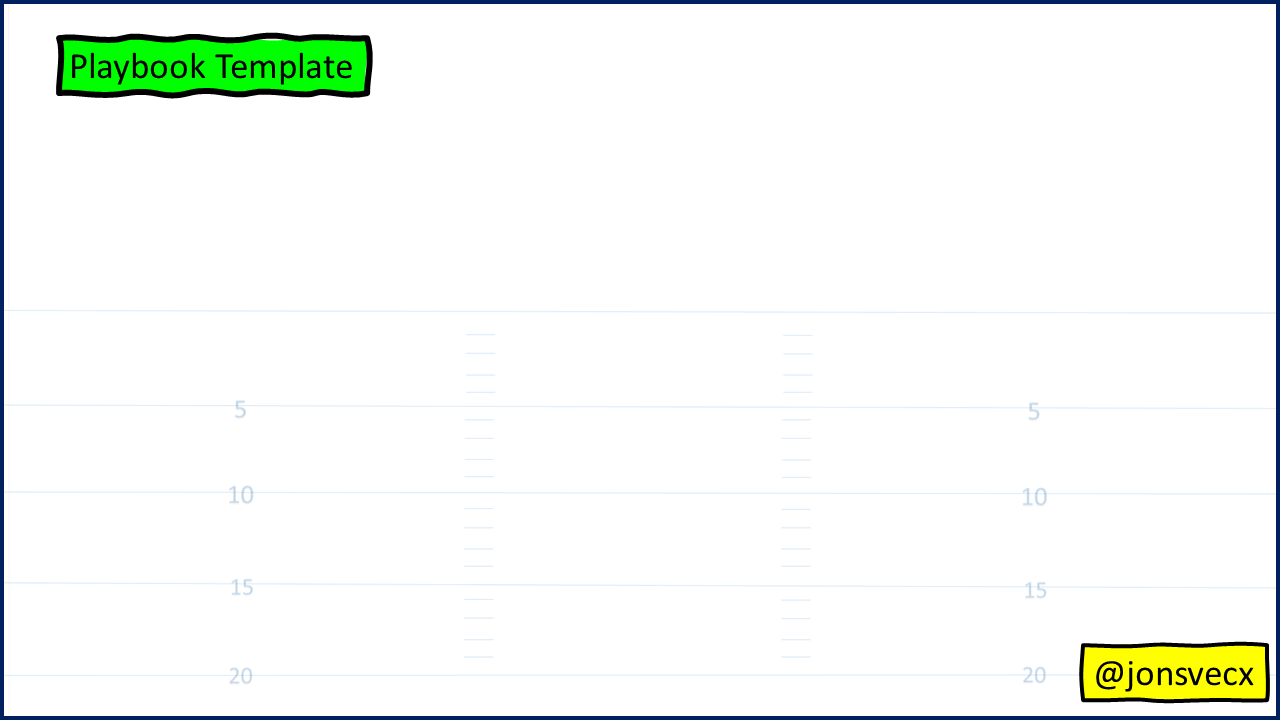Even though we’re in the midst of a heat wave here in Nova Scotia, it’s already beginning to feel like fall. Our Training Camp at STFX starts in a few short weeks, and this time of year always brings up the debate around the distribution of playbooks.
In my early days of coaching, it was always a hard copy playbook. We would send the files over to the print shop, go pick up the multiple boxes of paper, and then manually place the hole-punched sheets into binders before handing them out to the players. A few years ago, I went to a digital playbook, which has some advantages and disadvantages.
Here are a few thoughts on the broad topic of playbooks and playbook distribution.
The Playbook
Before deciding how you want to hand out your playbook, there is first the issue of creating the playbook itself. I think we all have different preferences here, and that saying about old dogs and new tricks comes to mind on this one.
There are a few football specific programs out there. PlayMaker Pro and HUDL fall into this category, though I’m sure there are many others that I’m less familiar with. These programs have some great built-in timesavers, like the ability to “flip hashes”, etc. Depending on how you will ultimately be presenting your playbook, these might work for you.
In the past I created my playbooks with Microsoft Word, though a few years ago I transitioned over to Power Point. The Power Point slides, I found, made for a better presentation during meetings.
I still use HUDL for things like scout cards. I find that’s where those built-in timesavers can really pay off.
Layout
This is something I’m always tweaking and adjusting. How will things be presented in your playbook? When putting in a Coverage, for example, how many different Offensive Formations will you show this Coverage working against in the playbook? When putting in a Run Play, how many different Fronts will be presented?
What different sections will be in your playbook? Will you divide up the Alignments, Fronts, Blitzes, Coverages? Or will some be combined? Is there a terminology page? An area for “special situations”? An essay on your offensive or defensive philosophy?
The bottom line is there are some things you will want to present in your playbook, and other things that you will get to your players in a different way. This choice is up to you.
It’s a good idea to have a number of templates ready when sitting down to work on your playbook.

Hard Copy Playbook
The classic hard copy.
I’ll admit, I’ve sometimes felt nostalgic towards this type of document since switching to digital. There’s something romantic about the dog-eared, scribbled over playbook sitting in a player’s locker. Some of you, I’m sure, are still using this method. And for good reason. Here are a few thoughts:
Pros:
Limited number of copies. You can hand out and collect these before and after each season. (Though there is always the threat of the photocopier.)
Physical document that can be brought to each meeting. Players can take notes right in the playbook.
Taking the time to print and distribute each playbook creates a sense of importance in the document.
Cons:
Can be expensive to print. We’re all on a budget.
If a players leaves one in a visiting locker room or on a bus, could get into the wrong hands.
Once it’s printed it’s more difficult to make changes to the document.
Digital Playbook
A digital playbook for a digital age.
Today’s players are extremely comfortable navigating a screen, so why not put their playbook on there? Again, there is always a tradeoff:
Pros:
No need to be economical with space. Adding another “page” to the playbook doesn’t add more printing costs.
Can be changed by the coach at any time.
Players always have their phones so they always have the playbook at hand.
Cons:
Always the threat of playbook getting “leaked” by email or, heaven forbid, on social media by a disgruntled player.
No physical document to bring to meetings. (When we “went digital”, we started giving the players branded notebooks to bring to meetings.)
Final Thoughts
The bottom line is that you’re going to need to teach your system and your plays to your players. A playbook is only one method for this, and probably won’t be your only means of teaching. Video, walk throughs, chalkboard sessions, tests, peer instruction — these and other methods are likely also being used to get the information across to your players in a way that sticks.
This is the joy and challenge of coaching.
As you’re working through your playbook, be sure to check out my Defensive Basics e-book by clicking this link: https://jonsvec.gumroad.com/l/defensivebasics
Jon Svec
Defensive Coordinator
St. Francis Xavier University
X-Men Football
IG: @jonsvecx
Twitter: @jonsvecx

